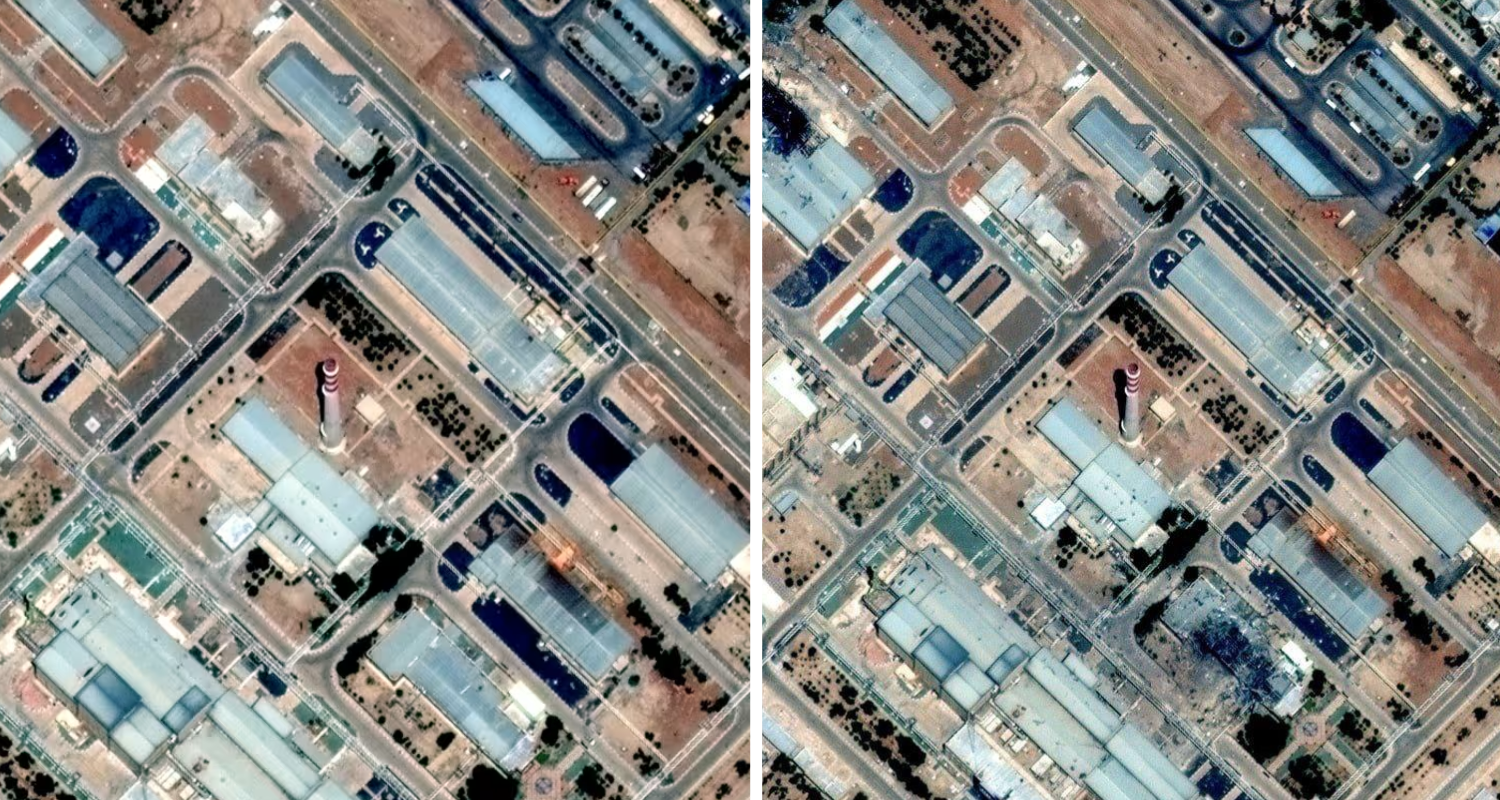In a sharp escalation of hostilities, Iran launched fresh retaliatory strikes on central Israel early Saturday, igniting fires in Holon, even as Israeli warplanes struck key locations inside Iran, including the city of Isfahan, home to a crucial nuclear research facility.
Shortly after the Iranian barrage, Isfahan’s Deputy Governor confirmed that the cities of Lanjan, Mobarakeh, Shahreza, and Isfahan itself were struck. Among the targets was Isfahan's nuclear research centre, though he maintained that “no leaks of hazardous materials” had occurred.

Amid fears of a drawn-out conflict, Iran has begun dismantling some of its nuclear enrichment infrastructure and moved enriched uranium to undisclosed, secure locations, according to reports from the Institute for the Study of War (ISW) and the Critical Threats Project (CTP).
Quoting a senior Islamic Revolutionary Guard Corps (IRGC) commander, the joint report noted, “Protecting Iranian nuclear material by hiding the material would make a US or Israeli effort to destroy the material more difficult.”
Also read: IAEA warns of nuclear disaster if Iran's nuclear sites are hit
The report further assessed that the statement was calculated to convey a warning to Western audiences that any military campaign aimed at destroying Iran’s nuclear assets could drag on for decades.
“The statement intends to send a message to the Western populace that war with Iran might drag on longer than expected; it could possibly stretch to decades before Iran’s nuclear material is fully destroyed and dismantled,” the report stated.
Israeli drone command targeted
Meanwhile, the Israeli Defence Forces (IDF) announced the killing of a second commander within the IRGC’s unmanned aerial vehicle (UAV) unit, deepening Tel Aviv’s targeted assassination campaign against Iran’s drone warfare leadership.
In a post shared on official channels, the IDF said its air force had successfully eliminated Amin Pour Jodkhi, who had assumed a “central role in the command’s operations” following the killing of Tahar Fur, another senior figure in Iran’s drone force, on June 13.
This marks the second high-profile strike by Israel on the IRGC’s UAV command structure in just over a week.
Strategic recalibrations on both sides
The tit-for-tat attacks mark a dramatic intensification in the regional conflict, as both Iran and Israel appear to be adjusting their military postures for a protracted confrontation.
Iran’s pre-emptive relocation of nuclear assets signals a strategic shift aimed at preserving its deterrence capabilities, while Israel’s continued targeting of the IRGC’s drone leadership underscores its intent to blunt Tehran’s asymmetric warfare options.
Observers say the developments point to a dangerous new phase in the Iran-Israel confrontation, one that risks drawing in other regional and global powers, including the United States.


